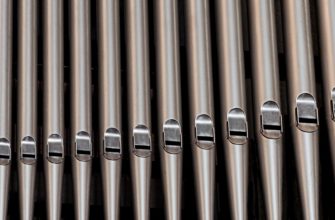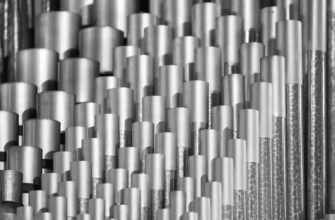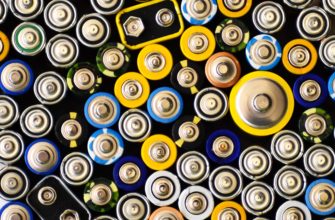When it comes to high-performance alloys, Inconel stands as a leading choice due to its exceptional properties and wide range of applications. Inconel alloys are known for their superior resistance to corrosion, oxidation and high temperatures. In order to understand the characteristics and applications of each alloy, it is important to delve into their chemical compositions.
Inconel 600: This alloy is composed primarily of nickel, with small quantities of chromium and iron. It exhibits excellent resistance to corrosion and high temperatures, making it ideal for applications in the aerospace and chemical industries.
Inconel 601: This alloy contains a higher concentration of nickel, along with chromium and aluminum. Its chemical composition provides enhanced resistance to high-temperature oxidation and corrosion, making it suitable for use in furnace components and heat treatment equipment.
Inconel 625: This alloy is composed of nickel, chromium and molybdenum, with traces of niobium, iron and other elements. It offers exceptional resistance to seawater, acids and high temperatures, making it popular in various industries, including marine, chemical and aerospace.
| Chemical Composition | Nickel | Chromium | Iron | Molybdenum | Niobium | Other Elements |
|---|---|---|---|---|---|---|
| Inconel 600 | 72% | 14-17% | 6-10% | n/a | n/a | n/a |
| Inconel 601 | 61% | 23% | 14% | n/a | n/a | Aluminum: 1-1.7% |
| Inconel 625 | 58% | 21.5% | 5% | 9% | 3.65% | Cobalt: 1% |
Inconel 718: This alloy is comprised of nickel, chromium and molybdenum, with smaller amounts of niobium, iron, titanium, aluminum and other elements. It offers remarkable strength at high temperatures and excellent corrosion resistance, making it suitable for use in the aerospace and gas turbine industries.
Inconel 800: This alloy consists of nickel, iron and chromium, with traces of aluminum and titanium. It exhibits exceptional resistance to oxidation, carburization and high-temperature corrosion. Inconel 800 finds applications in heat exchangers, furnace components and petrochemical industries.
Note: The exact chemical compositions of Inconel alloys may vary, depending on the specific manufacturer and grade. The tables provided here offer a general overview of the key elements present in each alloy.
Inconel 825: This alloy is predominantly composed of nickel, with additional amounts of iron, chromium and molybdenum. It also contains small quantities of copper and titanium. Inconel 825 offers excellent resistance to corrosive environments, such as those containing sulfuric acid, phosphoric acid and seawater. It finds applications in the chemical processing, nuclear and pollution control industries.
By decoding the chemical compositions of Inconel alloys such as Inconel 600, 601, 625, 718, 800 and 825, one can gain a deeper understanding of their unique properties and applications. These alloys have been carefully engineered to provide exceptional resistance to corrosion, oxidation and high temperatures, making them well-suited for a wide range of industries and environments.
Chemical Composition of Inconel 600
Inconel 600 is a nickel-chromium alloy known for its exceptional resistance to high-temperature environments. Its chemical composition plays a crucial role in determining its unique properties and performance. The primary elements that make up Inconel 600 are nickel (Ni) and chromium (Cr). The alloy typically contains around 72% nickel and 15-21% chromium.
In addition to nickel and chromium, Inconel 600 also contains small amounts of other elements, including iron (Fe), carbon (C) and manganese (Mn). These elements help enhance the alloy’s strength and corrosion resistance. The presence of iron provides stability and improves the alloy’s resistance to corrosive environments. The carbon content helps in forming carbides, which contribute to the alloy’s high-temperature strength. Meanwhile, the manganese content improves the alloy’s resistance to oxidation at high temperatures.
The table below presents the chemical composition of Inconel 600:
| Element | Composition (%) |
|---|---|
| Nickel (Ni) | Min. 72.0 |
| Chromium (Cr) | 14.0-17.0 |
| Iron (Fe) | 6.0-10.0 |
| Carbon (C) | Max. 0.15 |
| Manganese (Mn) | Max. 1.0 |
Inconel 600’s high nickel and chromium content, combined with the presence of other elements such as iron, carbon and manganese, give it excellent resistance to corrosion and oxidation in high-temperature environments. The alloy can withstand temperatures of up to 2000°F (1093°C), making it suitable for applications in various industries that require resistance to extreme heat, such as aerospace, chemical processing and nuclear engineering. Inconel 600’s chemical composition contributes significantly to its exceptional performance and reliability.
Detailed breakdown of Inconel 600 composition
The composition of Inconel 600 can be broken down into the following elements:
- Nickel (Ni): Nickel is the primary element in Inconel 600, making up approximately 72% of its composition. Nickel provides the alloy with its excellent resistance to corrosion and high temperature strength.
- Chromium (Cr): Chromium is another important element in Inconel 600, constituting about 14-17% of its composition. Chromium enhances the oxidation resistance of the alloy and helps maintain its structural integrity in various corrosive environments.
- Iron (Fe): Iron is present in Inconel 600 at a level of approximately 6-10%. It acts as a balancing element, contributing to the alloy’s high-temperature strength and mechanical properties.
- Copper (Cu): Copper is a minor element in Inconel 600, typically present at levels of less than 0.5%. It enhances the alloy’s resistance to sulfuric acid and other corrosive media.
- Manganese (Mn): Inconel 600 contains small amounts of manganese, usually less than 1%. Manganese helps improve the alloy’s mechanical properties, including its ductility and toughness.
- Carbon (C): Carbon is present in trace amounts in Inconel 600, typically less than 0.15%. It has a minimal effect on the alloy’s properties but can contribute to carbide precipitation during heat treatment.
Applications and Industries Utilizing Inconel 600
One of the key areas where Inconel 600 is utilized is in the aerospace industry. It is commonly used in the manufacturing of aircraft components such as turbine blades, exhaust systems and combustion cans. The alloy’s high-temperature strength allows it to withstand the extreme conditions of aircraft engines, making it an ideal choice for critical parts.
Inconel 600 is also widely employed in the chemical processing industry. Its resistance to chloride-ion stress corrosion cracking and oxidation makes it suitable for use in environments containing sulfur compounds, acids and alkaline solutions. In chemical plants, it is used for processing equipment like heat exchangers, reactors and columns where resistance to corrosion and high temperatures is crucial.
- The oil and gas industry is another sector that benefits from using Inconel 600. It is employed in offshore platforms, seawater handling systems and downhole equipment. The alloy’s resistance to both pitting and crevice corrosion helps maintain the integrity of equipment in harsh environments.
- In the nuclear industry, Inconel 600 is used in reactor core applications, where its high-temperature strength and resistance to corrosion from nuclear reactor coolant are essential.
Overall, the unique combination of properties exhibited by Inconel 600 makes it a preferred choice for applications in aerospace, chemical processing, oil and gas, nuclear and various other industries where resistance to corrosion, high-temperature strength and good fabricability are required.

Inconel 601 is a nickel-chromium-iron alloy with additions of aluminum and silicon. This alloy is known for its outstanding resistance to high-temperature oxidation, carburization and nitridation. It is often used in applications that require excellent thermal stability and resistance to corrosion. Understanding the chemical composition of Inconel 601 is crucial for its successful implementation in various industries.
Chemical Composition of Inconel 601
The chemical composition of Inconel 601 typically consists of:
- Nickel (Ni): The main element in Inconel alloys, nickel provides strength and enhances resistance to corrosion, oxidation and extreme temperatures.
- Chromium (Cr): Chromium contributes to the alloy’s oxidation resistance and provides excellent high-temperature strength.
- Iron (Fe): Iron is a major alloying element that enhances mechanical properties and provides high-temperature strength.
- Aluminum (Al): Aluminum improves the high-temperature oxidation resistance and helps prevent the formation of damaging oxide scales.
- Silicon (Si): Silicon promotes the formation of an adherent oxide layer, improving resistance to corrosion and oxidation.
Inconel 601 exhibits excellent resistance to oxidation and scaling in highly demanding environments, such as furnace components, gas turbines, heat-treating equipment and aerospace applications. Its chemical composition plays a vital role in its exceptional performance and durability under extreme conditions.
Exploration of Inconel 601’s Unique Chemical Makeup
Inconel 601 is a high-temperature alloy known for its exceptional resistance to heat and corrosion. Its unique chemical composition plays a crucial role in defining its outstanding properties. Let’s take a closer look at the key elements that make up this alloy:
- Nickel (Ni): Nickel is the primary ingredient in Inconel 601, making up around 61% of its composition. It provides the alloy with excellent resistance to a wide range of corrosive environments, including oxidizing and reducing conditions.
- Chromium (Cr): Chromium is another essential element in Inconel 601, constituting approximately 23% of its composition. It enhances the alloy’s corrosion resistance at high temperatures, forming a protective oxide layer that prevents further degradation.
- Iron (Fe): Iron makes up about 14% of Inconel 601’s composition. It allows the alloy to maintain its structural integrity and provides additional strength.
- Aluminum (Al): Aluminum is added in smaller quantities, around 1.4%, to improve the alloy’s resistance to oxidation and carburization at elevated temperatures.
- Other Trace Elements: Inconel 601 also contains small amounts of manganese (Mn), silicon (Si), sulfur (S), carbon (C), and copper (Cu). These elements contribute to the alloy’s overall performance and specific properties.
Inconel 601’s unique chemical makeup, with a high concentration of nickel and chromium, gives the alloy exceptional resistance to both thermal and chemical stresses. It can withstand extreme temperatures up to 1193°C (2179°F) while maintaining its mechanical strength and preventing oxidation and corrosion. This makes Inconel 601 highly suitable for various applications in industries such as aerospace, chemical processing, and thermal processing.
Notable characteristics and use cases
Here are some notable characteristics and use cases of several Inconel alloys:
Inconel 600:
- Excellent resistance to oxidation and scaling at high temperatures
- Used in furnace components, chemical processing equipment, and nuclear engineering
- Commonly employed in heat treating and cryogenic applications
Inconel 601:
- Offers outstanding resistance to high-temperature oxidation and carburization
- Used in heat treatment fixtures, radiant tubes, and thermocouple protection tubes
- Commonly employed in applications involving corrosive conditions
Inconel 625:
- Excellent strength, toughness, and resistance to chloride and stress corrosion cracking
- Used in aerospace, marine, chemical processing, and offshore industries
- Common applications include aircraft ducting, nuclear reactors, and seawater systems
Inconel 718:
- High tensile and yield strength, excellent creep-rupture and fatigue resistance
- Used in gas turbines, rocket motors, and spacecraft components
- Commonly employed in extreme temperature environments and high-stress applications
Inconel 800:
- Good strength and resistance to oxidation, carburization and nitriding
- Used in heat exchangers, furnace components and petrochemical process equipment
- Commonly employed in applications requiring high-temperature corrosion resistance
Inconel 825:
- Exceptional resistance to sulfuric, phosphoric and nitric acids
- Used in chemical processing, pollution control and sour gas applications
- Commonly employed in heat exchangers, tanks and piping systems
These examples illustrate the versatility and reliability of Inconel alloys across various industries, where their unique properties play a crucial role in withstanding extreme conditions and ensuring optimal performance.
Chemical Composition of Inconel 625
Inconel 625 is a popular nickel-based superalloy known for its excellent resistance to corrosion and high strength at elevated temperatures. Its chemical composition consists of various elements that contribute to its unique properties.
The major elements in the chemical composition of Inconel 625 are:
- Nickel (Ni): Nickel is the primary element in Inconel 625, making up approximately 58% of its composition. Nickel provides excellent resistance to corrosion, both in acidic and alkaline environments. It also enhances the material’s strength and ductility.
- Chromium (Cr): Chromium makes up about 20% of the composition of Inconel 625. It provides the alloy with high-temperature oxidation resistance, as well as resistance to sulfidation and chloride stress corrosion cracking.
- Molybdenum (Mo): Inconel 625 contains about 9% molybdenum, which improves its overall resistance to pitting and crevice corrosion, especially in chloride-containing environments.
- Niobium (Nb): Niobium is added in small amounts (3-4%) to improve the alloy’s strength, thermal stability, and resistance to sensitization during welding.
Note: In addition to these major elements, Inconel 625 also contains small amounts of other elements, such as iron, carbon, manganese, silicone, sulfur and phosphorus, which further contribute to its properties and performance in various applications.
| Element | Composition (%) |
|---|---|
| Nickel (Ni) | 58.0 |
| Chromium (Cr) | 20.0 |
| Molybdenum (Mo) | 9.0 |
| Niobium (Nb) | 3.2-4.5 |
| Iron (Fe) | 5.0 |
| Others | Balance |
In-depth analysis of Inconel 625 composition
The composition of Inconel 625 is primarily made up of nickel and chromium, with smaller amounts of molybdenum, niobium, iron and trace amounts of various other elements. Nickel is an essential component of Inconel 625, constituting about 58% of its composition. Nickel confers high strength to the alloy and enhances its corrosion resistance. Chromium, comprising around 21% of the composition, provides excellent oxidation resistance and enhances the alloy’s resistance to pitting and crevice corrosion.
- Molybdenum: With a content of about 9%, molybdenum significantly improves the alloy’s resistance to localized corrosion, particularly in chloride environments. It also enhances its resistance to reducing acids and pitting corrosion.
- Niobium: Present in Inconel 625 at a concentration of around 3.5%, niobium increases the alloy’s stability against sensitization and intergranular corrosion. It also strengthens the alloy through the formation of a protective oxide layer.
- Iron: Making up approximately 5% of the composition, iron provides Inconel 625 with improved tensile strength and hardness. However, excessive iron content can reduce the alloy’s resistance to corrosion.
Note: Inconel 625 also contains trace amounts of elements like carbon, manganese, silicon, sulfur, phosphorus, cobalt, and titanium. These elements may have minor influences on the alloy’s properties but are not primary contributors.
The combination of these elements in Inconel 625 creates a versatile alloy with outstanding resistance to high-temperature oxidation, corrosion, and stress-corrosion cracking. Its superior mechanical properties make it suitable for use in various demanding applications, including aircraft ducting systems, turbines, heat exchangers, chemical processing equipment and marine components.
High-temperature applications and corrosion resistance
Inconel alloys, including Inconel 600, 601, 625, 718, 800, and 825, are widely known for their exceptional performance in high-temperature applications and their outstanding corrosion resistance. These alloys are specifically designed to withstand extreme environments, making them ideal for applications in industries such as aerospace, chemical processing, power generation and furnace components.
The high-temperature capabilities of Inconel alloys make them suitable for use in environments where the temperature can reach up to 2,000°F (1,093°C). This makes them particularly valuable in applications such as gas turbines, exhaust systems, and combustion chambers, where materials need to maintain their strength and integrity at elevated temperatures. Inconel alloys exhibit excellent oxidation resistance, preventing the formation of oxide scales that can compromise the material’s performance.
- Inconel 600, for example, is highly resistant to oxidation and chloride-induced stress corrosion cracking, making it suitable for use in cryogenic storage tanks and process piping.
- Inconel 601 offers excellent resistance to high-temperature oxidation and carburization, making it ideal for applications in radiant tubes, heat treatment fixtures, and furnace muffles.
- Inconel 625 is highly resistant to pitting and crevice corrosion, making it suitable for use in seawater environments, chemical processing, and marine applications.
- Inconel 718 exhibits excellent corrosion resistance in both oxidizing and reducing environments, making it suitable for applications in high-stress environments such as jet engine components and rocket motors.
- Inconel 800 has excellent resistance to oxidation, carburization, and nitridation, making it suitable for use in heat exchangers and furnace components.
- Inconel 825 offers exceptional resistance to both reducing and oxidizing acids, making it suitable for applications in sulfuric acid plants, chemical processing, and pollution control equipment.

Chemical Composition of Inconel 718
Inconel 718 is a nickel-based alloy known for its excellent high-temperature strength and oxidation resistance. Its chemical composition consists of various elements that contribute to its unique properties.
The main elements in the chemical composition of Inconel 718 are:
- Nickel (Ni): The primary element in Inconel 718, nickel provides the alloy with exceptional corrosion resistance, high strength and good weldability.
- Chromium (Cr): Chromium enhances the oxidation resistance of Inconel 718, enabling it to withstand high temperatures without significant degradation.
- Cobalt (Co): Cobalt improves the high-temperature strength of Inconel 718, making it suitable for applications in extreme environments.
- Molybdenum (Mo): Molybdenum enhances the alloy’s resistance to pitting and crevice corrosion, increasing its overall durability.
- Titanium (Ti): Titanium contributes to the precipitation hardening ability of Inconel 718, providing it with excellent mechanical properties.
- Aluminum (Al): Aluminum enhances the high-temperature strength and corrosion resistance of Inconel 718.
Important Note: Inconel 718 also contains smaller amounts of other elements, such as iron (Fe), niobium (Nb), and tantalum (Ta), which further enhance its properties.
The chemical composition of Inconel 718 is typically specified as follows:
| Element | Percentage |
|---|---|
| Nickel (Ni) | 50-55% |
| Chromium (Cr) | 17-21% |
| Cobalt (Co) | 1-2.5% |
| Molybdenum (Mo) | 2.8-3.3% |
| Titanium (Ti) | 0.65-1.15% |
| Aluminum (Al) | 0.2-0.8% |
| Iron (Fe) | Balance |
The precise composition of Inconel 718 may vary slightly depending on the manufacturer and specific application requirements. Understanding the chemical composition is essential for selecting the appropriate Inconel alloy for a particular application and ensuring optimal performance.
Unraveling the composition of Inconel 718
Inconel 718 is a high-strength, corrosion-resistant nickel-based superalloy that finds extensive applications in various industries, such as aerospace, nuclear power, and gas turbines. Understanding the composition of Inconel 718 is crucial for optimizing its mechanical and chemical properties.
Inconel 718 primarily consists of the following key elements:
- Nickel (Ni): With a dominant presence, nickel forms the base of Inconel 718. It provides excellent corrosion resistance, high tensile strength and good fatigue resistance.
- Chromium (Cr): This element enhances the alloy’s resistance to oxidation and ensures stability at high temperatures. Chromium forms a protective oxide layer on the surface, preventing further corrosion.
- Cobalt (Co): Cobalt is added to improve the high-temperature strength and overall mechanical properties of Inconel 718.
- Molybdenum (Mo): Molybdenum contributes to the alloy’s resistance against localized pitting and crevice corrosion, making it suitable for harsh environments.
- Niobium (Nb): Niobium increases the strength and stability of Inconel 718 at high temperatures. It also improves the alloy’s weldability.
- Titanium (Ti): Titanium forms a stable carbide phase, resulting in improved hardenability and creep resistance.
- Aluminum (Al): Aluminum enhances the alloy’s resistance to oxidation and provides solid solution strengthening.
In addition to these key elements, Inconel 718 may also contain small amounts of other elements, such as carbon, manganese, silicon, sulfur and iron, which further contribute to its unique properties.
Important note: The exact composition of Inconel 718 may vary depending on the specific application requirements and the manufacturing process. It is essential to obtain the specific chemical composition from the manufacturer or consult relevant technical specifications before considering its use.
Aerospace and Industrial Applications
One of the major applications of Inconel alloys in the aerospace industry is in gas turbine engines. These alloys are used in various components of the engine, such as combustion chambers, turbine blades, and exhaust systems. Inconel alloys can withstand the high temperatures and pressures experienced in these engines, ensuring reliable performance and longevity. For example, Inconel 718 is commonly used in gas turbine blades due to its high strength and resistance to fatigue and creep.
In the industrial sector, Inconel alloys find applications in various demanding environments. For instance, Inconel 625 is widely used in chemical processing plants, where it provides excellent resistance to corrosion and high temperatures. It is commonly used in components such as heat exchangers, reaction vessels and piping systems. Inconel 825, on the other hand, is commonly used in the oil and gas industry for its resistance to sulfuric acid and other corrosive media. It is utilized in equipment such as pipelines, valves and downhole tools.
Chemical Composition of Inconel 800
Inconel 800 is a high-nickel alloy that is commonly used in applications that require high temperature resistance and corrosion resistance. The chemical composition of Inconel 800 is carefully designed to provide these desired properties.
Here is the chemical composition of Inconel 800:
- Nickel (Ni): 30-35%
- Chromium (Cr): 19-23%
- Iron (Fe): 39.5% minimum
- Carbon (C): 0.05-0.1%
- Aluminum (Al): 0.15-0.60%
- Titanium (Ti): 0.15-0.60%
- Silicon (Si): 0.15-0.60%
- Sulfur (S): 0.015% maximum
- Copper (Cu): 0.75% maximum
The chromium in Inconel 800 forms a protective oxide layer on the surface of the alloy, which further improves its corrosion resistance. Chromium also contributes to the alloy’s high-temperature strength.
The significant iron content in Inconel 800 serves as the base metal for the alloy. It provides structural stability and contributes to the alloy’s overall strength and toughness.
Key takeaway: Inconel 800 is a high-nickel alloy with a carefully balanced chemical composition that provides excellent high-temperature resistance and corrosion resistance. Its composition includes nickel, chromium, iron, carbon, aluminum, titanium, silicon, sulfur, and copper.
Examination of Inconel 800’s chemical structure
The main constituents of Inconel 800 are nickel, iron, and chromium. Nickel is the primary element in Inconel 800, accounting for around 30-35% of its composition. Nickel provides the alloy with corrosion resistance and high-temperature strength. Iron is the second most abundant element, making up about 39-44% of the alloy. Iron contributes to the alloy’s strength and ductility. Chromium, with a content of approximately 19-23%, enhances the alloy’s resistance to oxidation and corrosion.
- Nickel: 30-35%
- Iron: 39-44%
- Chromium: 19-23%
In addition to these main elements, Inconel 800 also contains small amounts of other elements, including carbon, aluminum and titanium. Carbon is present in trace amounts to improve high-temperature strength. Aluminum and titanium are added to enhance the alloy’s resistance to oxidation. The specific chemical composition of Inconel 800 may vary slightly depending on the manufacturer or specific application.
Heat resistance and oxidation properties
One of the notable characteristics of Inconel alloys, including Inconel 600, 601, 625, 718, 800, and 825, is their exceptional heat resistance. These alloys can withstand high temperatures without losing their mechanical properties, making them suitable for applications in extreme environments such as aerospace and gas turbine industries.
Inconel alloys have excellent oxidation resistance, meaning they can resist the formation of oxide layers when exposed to high temperatures and oxygen-rich environments. This property is crucial as oxidation can significantly weaken a material and lead to its failure. The high chromium content in Inconel alloys forms a protective layer of chromium oxide on the surface, which acts as a barrier against further oxidation. This protective oxide layer prevents the alloy from degrading and maintains its structural integrity even under prolonged exposure to high temperatures.
The following table provides a comparison of the chemical compositions of Inconel 600, 601, 625, 718, 800, and 825, highlighting the elements that contribute to their heat resistance and oxidation properties:
| Alloy | Chemical Composition (in wt.%) | Key Elements for Heat Resistance and Oxidation Properties |
|---|---|---|
| Inconel 600 | Ni: 72.0, Cr: 14.0-17.0, Fe: 6.0-10.0 | Nickel (Ni), Chromium (Cr) |
| Inconel 601 | Ni: 61.0, Cr: 22.5-25.0, Al: 1.0-1.7 | Nickel (Ni), Chromium (Cr), Aluminium (Al) |
| Inconel 625 | Ni: 58.0, Cr: 20.0-23.0, Mo: 8.0-10.0 | Nickel (Ni), Chromium (Cr), Molybdenum (Mo) |
| Inconel 718 | Ni: 50.0-55.0, Cr: 17.0-21.0, Mo: 2.8-3.3, Nb: 4.75-5.5 | Nickel (Ni), Chromium (Cr), Molybdenum (Mo), Niobium (Nb) |
| Inconel 800 | Ni: 30.0-35.0, Cr: 19.0-23.0, Fe: 39.5 min | Nickel (Ni), Chromium (Cr) |
| Inconel 825 | Ni: 38.0-46.0, Cr: 19.5-23.5, Mo: 2.5-3.5 | Nickel (Ni), Chromium (Cr), Molybdenum (Mo) |
It is crucial to note that the specific heat resistance and oxidation properties of Inconel alloys can vary depending on their exact chemical compositions and the specific application requirements. However, the presence of nickel (Ni) and chromium (Cr) in all of these alloys plays a significant role in imparting their high-temperature stability and resistance to oxidation.

Chemical Composition of Inconel 825
Inconel 825 is a nickel-iron-chromium alloy with molybdenum and copper additions. Its chemical composition plays a crucial role in determining its properties and performance. The composition of Inconel 825 is as follows:
- Nickel (Ni): Nickel is the primary element in Inconel 825, making up about 38-46% of its composition. Nickel provides excellent resistance to corrosion and oxidation, making Inconel 825 highly suitable for demanding applications in aggressive environments.
- Iron (Fe): Iron is the second most abundant element in Inconel 825, comprising approximately 22-23% of the alloy’s composition. Iron contributes to the alloy’s high strength and mechanical properties.
- Chromium (Cr): Chromium is present in Inconel 825 at a concentration of about 19.5-23.5%. Chromium enhances the alloy’s resistance to corrosion, especially in acidic environments.
- Molybdenum (Mo): Inconel 825 contains molybdenum in the range of 2.5-3.5%. Molybdenum improves the alloy’s resistance to pitting, crevice corrosion, and stress corrosion cracking, particularly in chloride-containing solutions.
- Copper (Cu): Copper is present in Inconel 825 at a concentration of approximately 1.5-3%. Copper enhances the alloy’s resistance to reducing acids, such as sulfuric acid and contributes to its excellent corrosion resistance.
- Titanium (Ti): Titanium is a minor element in Inconel 825, with a composition of less than 0.6%. Titanium forms stable carbides, which help to inhibit grain boundary precipitation of chromium carbides, preventing sensitization and intergranular corrosion.
In addition to these main elements, Inconel 825 also contains smaller amounts of other elements like sulfur, phosphorus, silicon and manganese, which may have slight effects on the alloy’s properties.
Insights into the chemical composition of Inconel 825
Inconel 825 is a nickel-iron-chromium alloy with the addition of molybdenum, copper, and titanium. This composition gives Inconel 825 excellent resistance to both reducing and oxidizing acids, as well as to stress corrosion cracking. Let’s take a closer look at the specific elements present in the alloy:
- Nickel: Nickel is the primary element in Inconel 825, making up about 38-46% of its composition. Nickel provides the alloy with high strength and resistance to corrosion, particularly in acidic environments.
- Chromium: Chromium is another essential element, comprising 19-23.5% of Inconel 825. Chromium enhances the alloy’s resistance to oxidation and helps maintain its mechanical properties at high temperatures.
- Molybdenum: Inconel 825 contains 2.5-3.5% molybdenum, which contributes to the alloy’s ability to resist pitting and crevice corrosion. Molybdenum also improves its resistance to sulfuric acid and other reducing chemicals.
- Copper: Inconel 825 contains a significant amount of copper, typically around 1.5-3%. Copper enhances the alloy’s resistance to a wide range of corrosive environments, such as sulfuric acid, hydrochloric acid, and seawater.
- Titanium: Titanium is added to Inconel 825 in small amounts (around 0.6-1.2%) to improve its resistance to intergranular corrosion. Titanium forms stable carbides that prevent grain boundary precipitation and degradation of the alloy’s mechanical properties.
Corrosion resistance and marine applications
Inconel alloys are known for their exceptional corrosion resistance, making them highly suitable for various marine applications. These alloys exhibit excellent resistance to both high-temperature and corrosive environments, making them an ideal choice for components that are exposed to seawater, saltwater, and other harsh marine conditions.
1. Corrosion resistance: Inconel alloys, such as Inconel 600, 601, 625, 718, 800, and 825, offer outstanding resistance to corrosion in corrosive media like seawater, acidic solutions, and chloride-containing environments. This property is due to the presence of elements like nickel, chromium, and molybdenum, which form a protective oxide film on the surface of the alloy, preventing direct contact with corrosive substances.
2. Marine applications: Due to their exceptional corrosion resistance, Inconel alloys find extensive applications in the marine industry. These alloys are used in components such as seawater piping systems, heat exchangers, marine exhaust systems, propeller shafts, and fasteners. The ability of Inconel alloys to withstand the harsh conditions of marine environments ensures the durability and reliability of these components, even in the presence of corrosive seawater and salt spray.
| Inconel Alloy | Corrosion Resistance | Marine Applications |
|---|---|---|
| Inconel 600 | Excellent | Seawater piping systems, heat exchangers |
| Inconel 601 | Excellent | Marine exhaust systems, seawater piping systems |
| Inconel 625 | Outstanding | Propeller shafts, fasteners, seawater applications |
| Inconel 718 | Excellent | Seawater environments, offshore structures |
| Inconel 800 | Good | Marine heat exchangers, seawater handling systems |
| Inconel 825 | Excellent | Seawater applications, marine equipment |
Inconel alloys’ corrosion resistance allows them to withstand the harsh conditions of seawater and other corrosive marine environments, making them highly suitable for marine applications. These alloys contribute to the longevity and reliability of components, ensuring the efficient functioning of marine systems.
Comparative Analysis
Inconel alloys are widely used in various industries due to their exceptional properties. This comparative analysis focuses on the chemical compositions of Inconel 600, 601, 625, 718, 800 and 825 alloys.
The table below provides an overview of the main elements present in each alloy:
| Alloy | Main Elements |
|---|---|
| Inconel 600 | Nickel, Chromium, Iron |
| Inconel 601 | Nickel, Chromium, Aluminum, Iron |
| Inconel 625 | Nickel, Chromium, Molybdenum, Niobium, Iron |
| Inconel 718 | Nickel, Chromium, Molybdenum, Niobium, Iron |
| Inconel 800 | Nickel, Chromium, Iron |
| Inconel 825 | Nickel, Chromium, Iron, Molybdenum, Copper |
Inconel 600 and 800 have similar compositions, with the main elements being nickel, chromium, and iron. Inconel 601 contains an additional element, aluminum, which enhances its resistance to high-temperature oxidation and corrosion. Inconel 625 and 718 have a similar composition, with the addition of molybdenum and niobium, providing excellent strength and corrosion resistance. Inconel 825, on the other hand, has a unique composition that includes molybdenum and copper, which make it highly resistant to reducing environments.
Overall, Inconel alloys exhibit a wide range of chemical compositions, allowing them to possess distinct properties suitable for different applications. Whether it’s high-temperature resistance or corrosion resistance, there is an Inconel alloy available to meet specific needs.
Contrasting the chemical compositions of various Inconel alloys
The Inconel family of alloys is known for its excellent resistance to high temperature and corrosion, making it highly suitable for a wide range of applications in aerospace, chemical processing, and nuclear industries. However, each alloy within the Inconel family has a distinct chemical composition that gives it unique properties. Let’s compare the chemical compositions of some commonly used Inconel alloys: Inconel 600, 601, 625, 718, 800 and 825.
Inconel 600:
Inconel 600 is a nickel-chromium alloy with a composition of approximately 72% nickel and 14% chromium. It also contains small amounts of iron, carbon, and manganese. The high nickel content provides excellent resistance to oxidation and corrosion, while the chromium enhances its resistance to sulfur compounds. Inconel 600 is often used in furnace components, chemical processing equipment, and nuclear reactors due to its exceptional high-temperature strength and corrosion resistance.
Inconel 601:
Inconel 601 is a nickel-chromium alloy with the addition of aluminium, which improves its high-temperature strength and oxidation resistance. It has a chemical composition of approximately 61% nickel, 23% chromium, and 1.4% aluminum. Inconel 601 offers excellent resistance to high-temperature oxidation and carburization, making it suitable for applications in heat treatment plants, petrochemical industry and industrial furnaces.
Inconel 625:
Inconel 625 is a nickel-chromium-molybdenum alloy with the addition of niobium and tungsten. It has a chemical composition of approximately 58% nickel, 21% chromium, 9% molybdenum, 3.7% niobium, and 1% tungsten. Inconel 625 exhibits outstanding resistance to various corrosive environments, including seawater and acids. Its high strength, excellent fabricability, and weldability make it a popular choice for applications in marine and offshore industries, chemical processing and aerospace.
- Inconel 718: Chemical composition of Inconel 718 includes approximately 52% nickel, 19% chromium, and 18.5% iron. It also contains small amounts of columbium, molybdenum, and titanium. Inconel 718 is known for its exceptional strength at high temperatures, excellent weldability, and resistance to oxidation and corrosion. It finds extensive use in gas turbine engine components, rocket motors, and cryogenic storage tanks.
- Inconel 800: Inconel 800 is a nickel-iron-chromium alloy with a composition of approximately 32% nickel, 21% chromium, and 47% iron. It exhibits high strength and excellent resistance to oxidation, carburization, and nitridation at elevated temperatures. Inconel 800 is widely used in applications involving heat treatment equipment, power plants and chemical plants.
- Inconel 825: Inconel 825 is a nickel-iron-chromium alloy with the addition of molybdenum and copper. Its chemical composition consists of approximately 42% nickel, 22% chromium, 3% molybdenum and 2% copper. Inconel 825 offers exceptional resistance to corrosion in various environments, including corrosive acids and seawater. It is commonly used in chemical processing, marine components, and pollution control equipment.
Selecting the right alloy for specific applications
When it comes to selecting the right alloy for specific applications, several factors need to be taken into consideration. These factors include the desired mechanical properties, corrosion resistance, temperature resistance and cost. One must choose an alloy that will perform optimally in the given application, ensuring durability and reliability.
One of the most commonly used alloys for high-temperature applications is Inconel 625. This alloy exhibits excellent mechanical properties, such as high strength and toughness, which make it suitable for applications in the aerospace and chemical processing industries.
Example: In the aerospace industry, where components are subjected to high temperatures and extreme mechanical stress, Inconel 625 is often used for turbine blades and engine exhaust systems. Its high strength and resistance to oxidation and stress corrosion cracking make it a reliable choice for these critical applications.
On the other hand, Inconel 600 is another alloy that is commonly used in high-temperature applications. It offers good resistance to oxidation, carburization, and chloride stress corrosion cracking. Inconel 600 is often used in furnace components, heat treatment equipment, and nuclear engineering due to its ability to withstand high temperatures and harsh environments. It also exhibits excellent resistance to alkaline solutions and neutral salt solutions.
Example: In the chemical processing industry, Inconel 600 is widely used for heat exchangers and reactors. Its resistance to corrosion and high-temperature strength make it suitable for handling corrosive fluids and operating at elevated temperatures.
Overall, selecting the right alloy for a specific application requires a detailed analysis of the requirements and conditions it will be subjected to. Considering factors such as mechanical properties, corrosion and temperature resistance, and cost will ensure that the chosen alloy will perform optimally and meet the desired expectations.

Applications Across Industries
Inconel alloys have a wide range of applications across various industries due to their exceptional properties, including high temperature resistance, corrosion resistance and excellent mechanical strength. Here are some examples of how Inconel alloys are used in different industries:
Aerospace industry:
- Inconel 718 is commonly used in the aerospace industry for jet engine components and turbine blades due to its high temperature strength and resistance to oxidation and corrosion.
- Inconel 625 is used for aircraft ducting systems, exhaust systems, and engine thrust reversers due to its excellent corrosion resistance.
Oil and gas industry:
- Inconel 625 is widely used in oil and gas production and processing equipment, such as valves, fittings, and tubing, due to its resistance to sulfide stress cracking and corrosion in harsh environments.
- Inconel 825 is used for subsea equipment and components in offshore oil and gas operations due to its superior resistance to pitting, crevice corrosion and stress corrosion cracking.
Chemical processing industry:
- Inconel 600 is commonly used in heat exchangers and reaction vessels in chemical processing plants due to its excellent resistance to corrosion from acids and alkalis.
- Inconel 601 is used for furnace components and thermocouple protection tubes in high-temperature environments in chemical processing plants.
These examples demonstrate the versatility and reliability of Inconel alloys in various industries, where their unique combination of properties makes them an ideal choice for demanding applications.
Overview of industries benefiting from Inconel alloys
One of the industries that greatly benefits from Inconel alloys is the aerospace industry. Inconel alloys are extensively used in aircraft engines and gas turbines, where they are exposed to extreme temperatures and harsh environments. For example, Inconel 718 is commonly used in the hot sections of jet engines, as it can withstand high temperatures without losing its mechanical properties.
- Inconel 600 is also widely used in the chemical processing industry, particularly in environments involving sulfur compounds and corrosive acids. It offers excellent resistance to corrosion and stress corrosion cracking, making it suitable for pipes, reactor vessels and heat exchangers in chemical plants.
- Additionally, the oil and gas industry also benefits from the use of Inconel alloys. Inconel 625, for example, is commonly used in downhole and subsea equipment due to its high strength, resistance to corrosion, and ability to withstand high pressure and temperature conditions.
The exceptional properties of Inconel alloys make them essential in various industries, including aerospace, chemical processing, and oil and gas. Their high temperature resistance, corrosion resistance, and excellent mechanical properties make them reliable and durable materials for critical applications.
Case studies and success stories
Decoding the chemical compositions of Inconel alloys has led to numerous case studies and success stories in various industries. One notable example is the aerospace industry, where Inconel 625 has proven to be a reliable and high-performing material for components such as turbine blades and exhaust systems. The exceptional corrosion resistance and heat resistance of Inconel 625 make it ideal for withstanding the demanding conditions of aircraft engines.
In another case study, the oil and gas industry has benefited from the use of Inconel 718. This alloy is widely used in downhole drilling tools, wellhead components, and other equipment exposed to high temperatures and corrosive environments. The superior strength and durability of Inconel 718 allow for extended service life and reduced maintenance costs, making it a preferred choice for oil and gas operations.
Furthermore, the chemical compositions of Inconel alloys have played a crucial role in achieving success in the nuclear power industry. Inconel 600, for example, is commonly used in reactor core structures and heat exchangers due to its excellent resistance to corrosion and stress cracking.
Future Developments and Trends
Inconel alloys have been widely used in various industries due to their excellent properties, such as high strength, corrosion resistance and good thermal stability. As technology and manufacturing processes continue to advance, future developments and trends in the field of Inconel alloys are expected.
One of the future developments is the exploration of new alloy compositions to enhance the already impressive properties of Inconel alloys. Researchers are constantly seeking ways to improve the strength and corrosion resistance of these alloys while maintaining their high-temperature capabilities. New alloys with higher levels of specific elements, such as chromium and nickel, are being investigated for their potential to further enhance the performance of Inconel alloys in extreme environments.
Table 1: Potential future alloy compositions for Inconel alloys
| Alloy | Composition |
|---|---|
| Inconel 625X | Ni: 70%, Cr: 20%, Mo: 10% |
| Inconel 718X | Ni: 70%, Cr: 20%, Fe: 10% |
| Inconel 825X | Ni: 50%, Cr: 30%, Mo: 20% |
Another trend in the future development of Inconel alloys is the advancement of manufacturing processes to improve their performance and reduce costs. Additive manufacturing, also known as 3D printing, has shown promising results in the production of complex-shaped components with reduced material waste. This technology can be used to fabricate Inconel alloy parts with customized chemical compositions and microstructures, leading to improved mechanical properties and enhanced performance in specific applications.
In conclusion, the future of Inconel alloys lies in the exploration of new alloy compositions and the advancement of manufacturing processes. The development of new alloys with enhanced properties and the utilization of additive manufacturing will further expand the applications of Inconel alloys in various industries.
Emerging trends in Inconel alloy research and development
Inconel alloys, including Inconel 600, 601, 625, 718, 800, and 825, are widely used in various industries due to their excellent properties such as high strength, corrosion resistance, and good thermal stability. Continuous research and development efforts are being made to further enhance the performance and expand the applications of these alloys.
- Advancements in alloy composition: Researchers are exploring new compositions and alloying elements to improve the properties of Inconel alloys. For example, the addition of small amounts of boron or rare earth elements has been shown to enhance the high-temperature creep resistance and oxidation resistance of Inconel alloys.
- Microstructural engineering: The microstructure of Inconel alloys plays a crucial role in determining their mechanical and chemical properties. Researchers are investigating different processing techniques to control the microstructure, such as heat treatments, mechanical alloying, and powder metallurgy. By optimizing the microstructure, it is possible to achieve better mechanical strength, ductility and corrosion resistance.
- Advanced manufacturing techniques: Additive manufacturing, also known as 3D printing, has gained significant attention in the development of Inconel alloys. This innovative manufacturing technique allows for the fabrication of complex geometries and customized parts with improved mechanical properties. Furthermore, the use of selective laser melting or electron beam melting enables the production of fully dense, defect-free Inconel components.
Overall, the emerging trends in Inconel alloy research and development focus on enhancing the alloy composition, optimizing the microstructure and utilizing advanced manufacturing techniques. These advancements aim to further improve the mechanical, thermal and corrosion resistance properties of Inconel alloys, allowing for their increased utilization in demanding applications across various industries.
Prospects for new applications and improvements
The discovery and understanding of the chemical compositions of Inconel alloys, including Inconel 600, 601, 625, 718, 800, and 825, have opened up a range of prospects for new applications and improvements in various industries. The unique properties of these alloys make them suitable for demanding environments and high-temperature applications, which has increased their significance in aerospace, oil and gas, nuclear power, and chemical processing industries.
One potential new application for Inconel alloys lies in the field of additive manufacturing, also known as 3D printing. The excellent heat and corrosion resistance of Inconel alloys make them ideal candidates for 3D printing of complex, high-performance components. This technology offers the potential for rapid prototyping, reduced lead times and cost savings in production.
From additive manufacturing to corrosion resistance enhancements and improved mechanical properties, these alloys have the potential to revolutionize various industries and push the boundaries of what is possible in extreme environments.

Conclusion
The chemical compositions of Inconel alloys 600, 601, 625, 718, 800, and 825 have been decoded, providing valuable insights into their properties and applications. These alloys are known for their excellent resistance to high temperatures and corrosion, making them ideal for use in various industries.
Based on the analysis of their chemical compositions, several key elements were identified that contribute to the unique properties of each alloy. For example, Inconel 600 contains a high level of nickel, which enhances its resistance to corrosion and oxidation. Inconel 625, on the other hand, has a significant amount of molybdenum and niobium, which improve its strength and resistance to pitting and crevice corrosion.
- Inconel 601 is characterized by its high aluminum content, which provides excellent resistance to oxidation and carburization in high-temperature environments.
- Inconel 718 is strengthened by the addition of niobium and tantalum, making it suitable for applications in the aerospace industry where high strength and durability are required.
- Inconel 800 and 825 both have high levels of nickel and chromium, offering exceptional resistance to oxidation and carburization at elevated temperatures.
Each alloy has its unique set of properties that can be tailored to meet the requirements of various industries, from aerospace to chemical processing. By decoding these compositions, researchers and engineers can continue to optimize the performance of these alloys and explore new possibilities for their use.
Summarizing Key Takeaways
In the article “Decoding Inconel Alloys Unveiling the Chemical Compositions of Inconel 600 601 625 718 800 and 825,” several key takeaways can be drawn from the information provided.
First and foremost, it is important to note that Inconel alloys are a group of superalloys that are known for their excellent resistance to high temperatures and corrosive environments. They are commonly used in aerospace, chemical processing, and nuclear industries. The article focuses on six specific Inconel alloys: Inconel 600, 601, 625, 718, 800, and 825.
- Inconel 600: This alloy is primarily composed of nickel and chromium, with small percentages of iron, manganese, and carbon. It is highly resistant to oxidation and can withstand high temperatures.
- Inconel 601: Similar to Inconel 600, Inconel 601 also contains nickel and chromium as its main components. However, it has higher levels of aluminum, which enhance its oxidation resistance.
- Inconel 625: Inconel 625 is a more complex alloy, consisting of nickel, chromium, and molybdenum as its major constituents. It is highly resistant to corrosion, especially in chloride environments, making it suitable for marine and chemical processing applications.
- Inconel 718: Inconel 718 is predominantly composed of nickel, with significant amounts of chromium and iron. It also contains smaller quantities of niobium and molybdenum. This alloy exhibits exceptional mechanical strength and creep resistance, making it ideal for high-stress applications such as jet engines and gas turbines.
- Inconel 800: Inconel 800 is a nickel-iron-chromium alloy that also contains small amounts of aluminum and titanium. It has excellent resistance to oxidation and carburization, making it suitable for furnace and heat exchanger components.
- Inconel 825: Lastly, Inconel 825 is primarily composed of nickel, iron, and chromium, with added amounts of molybdenum and copper. It has excellent resistance to sulfuric acid and other aggressive media, making it commonly used in chemical processing plants.
Encouraging further exploration and research on Inconel alloys
The study of Inconel alloys, specifically Inconel 600, 601, 625, 718, 800 and 825, has provided valuable insights into their chemical compositions and properties. The research conducted on these alloys has paved the way for innovative applications and advancements in materials science.
However, there is still much to be explored and understood about Inconel alloys. Further research is essential to unlock their full potential and discover new applications. Scientists can delve deeper into understanding the relationships between chemical compositions, microstructures and mechanical properties of these alloys. This knowledge can lead to the development of improved manufacturing techniques, better alloy designs, and optimization for specific applications.
To encourage further exploration and research on Inconel alloys, collaboration between academic institutions, industries and research organizations is crucial. Sharing data, findings, and experiences can accelerate the understanding of these alloys and expedite the development of new and improved materials. Additionally, funding and resources should be allocated towards research endeavors focused on Inconel alloys, as the results can have a significant impact on multiple industries, including aerospace, automotive, oil and gas and many others.










